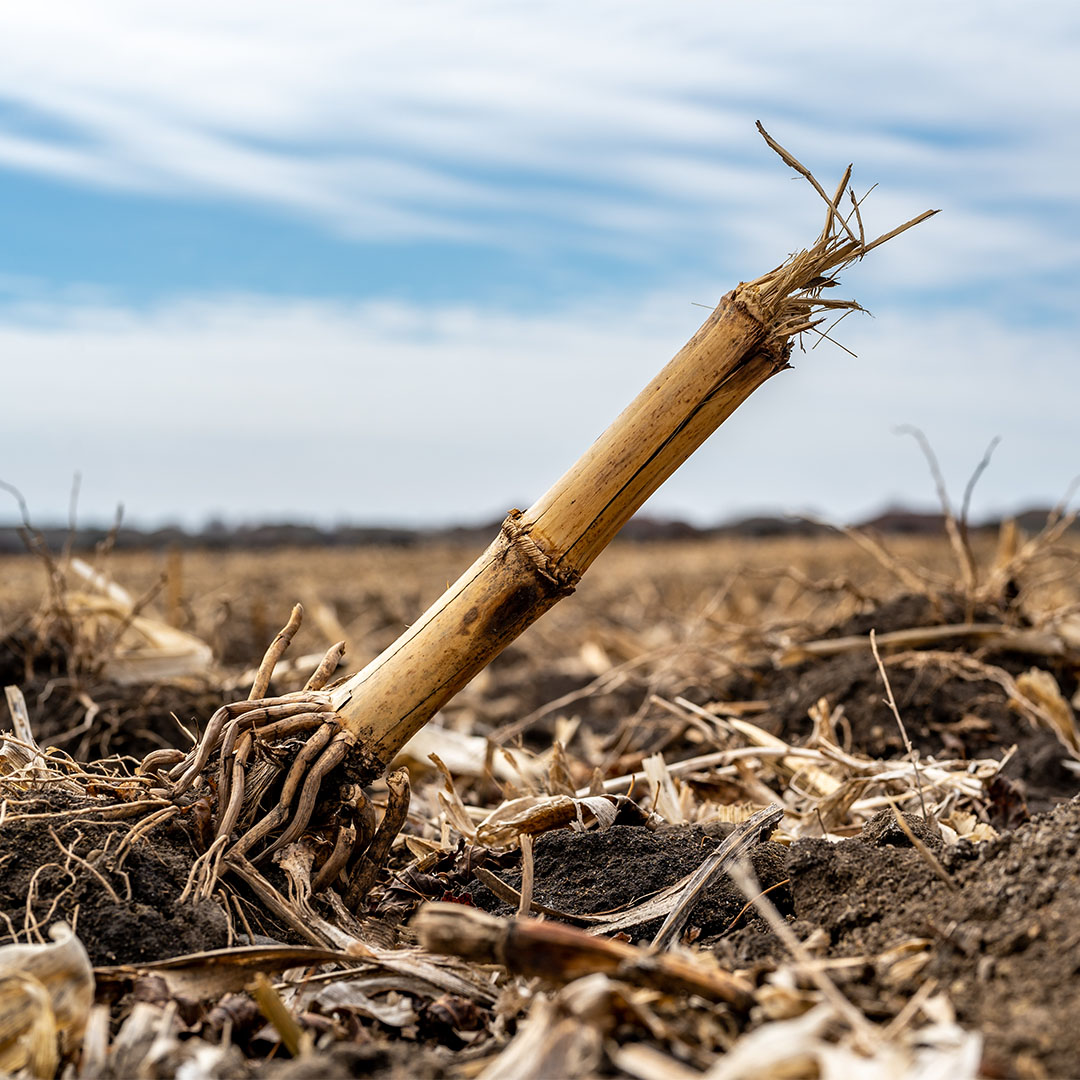As fall approaches, and harvest begins, farmers are already starting to think about next year’s fertilizer plan. Today’s farmers are choosing sustainable solutions like crop residue decomposition to maintain nutrient-rich soil. But when does crop residue have value? Crop residue becomes valuable when it is broken down through mechanical and chemical processes. Making it into accessible nutrients for next year’s crops.
To understand decomposition of crop residues, let’s quickly discuss the structure of plant tissues. The cell walls of plants are made of long, complex carbon (C) chains, with differing amounts of oxygen, hydrogen, nitrogen (N), phosphorus, and sulphur; these chains are the foundation for sugars, proteins, cellulose, and other important compounds found in plant tissues (1). The rate at which these compounds break down depends on their chemical structure, as well as external factors, such as temperature and moisture (1,2,3).
The decomposition of crop residue makes C and N from plant tissues available to soil microorganisms for energy, which they use to continue cycling carbon and nutrients, increasing the value of crop residue and creating a nutrient-rich soil (1). But to do this, there are a series of steps involved in the breakdown of crop residue:
Leaching describes how ions and water-soluble organic compounds dissolve in water, seep out of the decomposed organic matter into the surrounding soil, and may be taken up by the soil microbes (3).
Fragmentation is a mechanical process in which plant matter is broken down into smaller pieces by soil fauna (1,3). Soil fauna are not as dominant a decomposer as fungi and bacteria, but no less important. They are classified based on size; microfauna (e.g., nematodes), mesofauna (e.g., mites), and macrofauna (e.g., earthworms) (1,3). Soil fauna specialize in the fragmentation process, and may also have an effect on the microbial populations; the act of grazing can spread microorganisms throughout the soil, increasing decomposition rates (3).
Chemical alteration further breaks down the fragmented plant matter into organic and inorganic compounds (3). This is performed mainly by microorganisms like fungi, bacteria, etc.:
- Fungi are a major group of decomposers that excrete enzymes to release smaller molecules from a food source, which they then absorb (5). They are capable of breaking down tough and long-lasting plant compounds, such as lignin and keratin. They also break down simple compounds, such as proteins, into their basic molecules, amino acids (3). Fungi are also more tolerant of drought-like conditions, unlike bacteria, which makes them the dominant decomposer in arid environments (3).
- Bacteria are another major decomposer involved in chemical alteration. Organic nutrients (compounds with C) are converted into inorganic forms (compounds without C) through a process known as mineralization (4). During decomposition, the soil microbes release organic N from the long C chains and absorb it. Any excess organic N is mineralized into inorganic N (i.e., ammonium) and released into the soil (3). This plant-available inorganic N will remain in the soil for the successive crops to take up. Immobilization occurs when there is not enough organic N in the soil and the microbes instead take up inorganic N (3).
The last step in the breakdown process is humification. Humification produces a substance called humus. Humus is resilient, complex organic matter that may not be used for energy by most microorganisms in the soil (1). Humus is critical for healthy soil and better yields, as it can:
- Retain nutrients
- Potentially increase fertility of the soil
- Potentially help prevent diseases in crops
- Naturally aerate the soil (6)
As fall approaches and crop residue is left to decompose over the winter, knowing how plant tissues break down within the soil will give you insight into which crops you should plant in spring, and whether you need to apply inoculants such as XiteBio® PulseRhizo®, XiteBio® SoyRhizo®, or XiteBio® Yield+®, or fertilizers such as DAP or MAP, to unlock the full potential of your soil.
References
- https://www.fao.org/3/a0100e/a0100e05.htm
2. https://agriculturistmusa.com/process-of-organic-matter-decomposition/
3. https://www.sciencedirect.com/science/article/pii/B9780124095489006886
4. https://www.sciencedirect.com/science/article/pii/B9780444639905000177
5. Peter H. Raven, Ray F. Evert, and Susan E. Eichhorn, Biology of Plants, 7th ed. (New York: W.H. Freeman and Company Publishers, 2005), p. 263.
6. https://education.nationalgeographic.org/resource/humus


